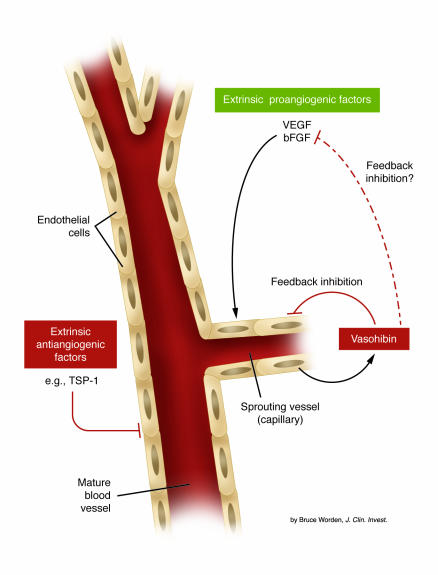Figure 1.
Control of angiogenesis by the action of extrinsic angiogenesis inhibitors (antiangiogenic factors), an intrinsic endothelial cell inhibitor (vasohibin), and extrinsic stimulators of angiogenesis such as VEGF and bFGF. Many of the extrinsic type inhibitors, some of which are listed in Table 1, may act to keep established mature blood vessels in a quiescent state (left side of the diagram); they may also contribute to pathologic, sprouting angiogenesis as a result of their downregulation and/or suppression, thus allowing stimulators such as VEGF or bFGF to act more efficiently. The intrinsic inhibitor, vasohibin, is induced in endothelial cells at later stages of sprouting vessel formation and acts in some fashion as a feedback mechanism to limit excessive angiogenesis (right side of the diagram), e.g., by directly interacting with endothelial cells in sprouting vessels or perhaps by direct interaction with and neutralization of the stimulator(s) which induced vasohibin in endothelial cells (13).

